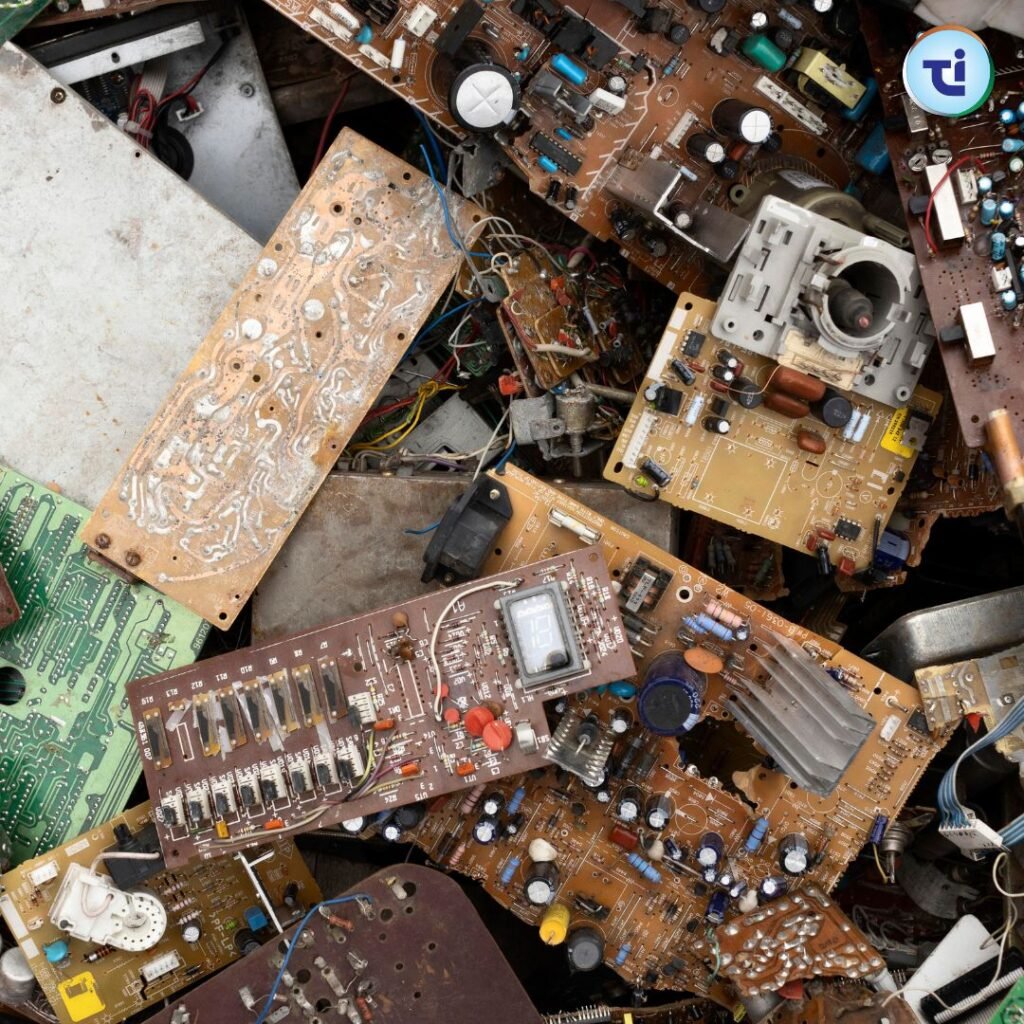Electronic waste, or e-waste, is one of the fastest-growing waste streams globally. With rapid technological advancement and frequent electronic upgrades, discarded gadgets like smartphones, laptops, televisions, and batteries have become common. Proper e waste disposal methods are essential to managing this crisis and ensuring environmental sustainability. Mishandling e-waste can lead to toxic pollution and severe health hazards. Hence, the adoption of responsible disposal methods is crucial for our planet’s future.
Understanding E-Waste
E-waste includes any discarded electronic device or component that is no longer in use. It contains valuable materials like copper, gold, and rare earth metals, as well as hazardous substances such as lead, mercury, and cadmium. Improper disposal leads to the release of toxins into soil and water, harming ecosystems and human health.
The Importance of E Waste Disposal Methods
Effective e waste disposal methods are essential for reducing environmental degradation. These methods help recover precious materials, reduce landfill waste, and minimize health risks. Moreover, recycling electronics reduces the need for mining raw materials, conserving energy and natural resources.
Major E Waste Disposal Methods
- Recycling: Recycling is the most recommended e waste disposal method. Electronic components are collected, dismantled, and sorted to retrieve valuable materials like copper, gold, aluminum, and plastic. Certified e-waste recycling centers follow safe procedures to prevent environmental damage.
- Reusing and Refurbishing: Many electronics can be repaired and reused. Refurbishing involves restoring used gadgets to good working condition. This reduces the demand for new devices, saves resources, and makes technology more affordable.
- Donation: Functional or repairable electronics can be donated to schools, non-profits, or low-income households. This extends the lifespan of devices and supports digital inclusion.
- Extended Producer Responsibility (EPR): Under EPR, manufacturers are responsible for collecting and disposing of end-of-life products. This encourages companies to design eco-friendly and recyclable products. In India, e-waste rules mandate producers to set up collection centers and ensure safe disposal.
- Formal Collection Systems: Setting up designated e-waste collection bins and take-back programs helps streamline proper disposal. Governments and organizations can organize e-waste drives to encourage community participation.
- Metal Recovery and Extraction: Advanced technologies like hydrometallurgy and pyrometallurgy allow for the safe extraction of precious metals from circuit boards. This method reduces the environmental impact of mining and supports resource recovery.
Challenges in E-Waste Management
Despite the availability of e waste disposal methods, several challenges persist. Informal recycling sectors often use unsafe methods like burning wires or using acid baths, releasing toxins. Lack of awareness among consumers and inadequate infrastructure also hinder proper disposal.
In developing countries like India, a significant portion of e-waste is handled by informal workers without protective equipment. This leads to serious health risks and environmental pollution. Strengthening the formal sector and providing training and incentives to informal workers can address this issue.
Government Regulations and Global Practices
India has established E-Waste Management Rules (2016), which emphasize the responsibility of producers, bulk consumers, and recyclers. The rules mandate safe collection, transportation, and disposal of e-waste. However, enforcement and compliance need improvement.
Globally, countries like Switzerland and Sweden lead in effective e-waste recycling. They have robust systems, public awareness campaigns, and financial incentives that promote safe disposal. Learning from these models can help India enhance its strategies.
Role of Consumers and Corporates
Consumers play a key role in e-waste management. Being mindful of electronic purchases, extending the life of gadgets, and using authorized recycling centers are responsible behaviors. Corporates must adopt sustainable practices, including green design and ethical recycling.
Companies like Apple and Dell have initiated take-back programs and use recycled materials in new devices. Such initiatives reduce carbon footprints and inspire other brands to follow suit.
Conclusion
E waste disposal methods are central to tackling the growing problem of electronic waste. With rising digital dependency, managing discarded electronics responsibly is not a choice but a necessity. Governments, industries, and individuals must collaborate to create a sustainable e-waste ecosystem.
Through awareness, regulation, and innovation, we can minimize the negative impacts of e-waste and promote a cleaner, greener future. Implementing and adhering to proper e waste disposal methods will ensure that technology continues to enhance our lives without compromising the health of our planet.







